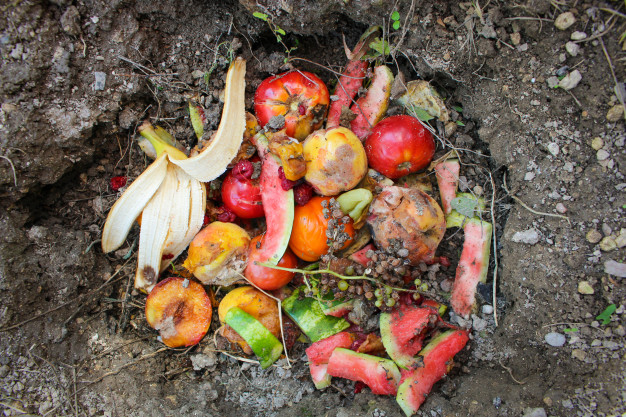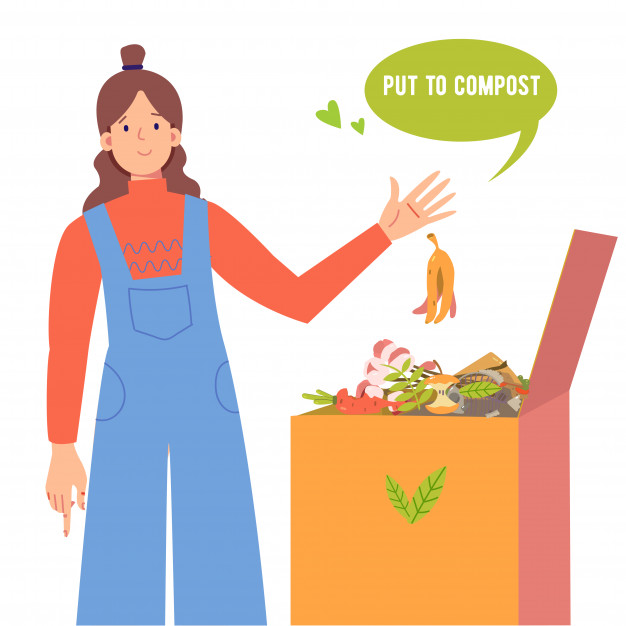Introduction
The Environmental Protection Agency (EPA) discovered that about 30% of the household waste we discard could be turned into valuable compost rather than stacked up with other non-biodegradable waste in landfills? Composting at home has become more of a requirement than a luxury, given the state of the atmosphere and the threat of climate change. Composting is the method of gathering organic materials such as food scraps and yard waste and allowing them to decompose into a soil-like product used to aid plant growth. Composting at home is a win-win situation. It’s not only a green way to dispose of kitchen scraps and garden waste, but it also produces excellent compost that your plants will enjoy. We may look at ways to compost work in our own homes with this easy guide on how to compost at home. After all, environmental sustainability is essential to all of us.
Benefits of composting at home

There are immense benefits of composting at home. Some of the benefits include-
- It enriches the soil and aids in the retention of moisture and the suppression of plant diseases and pests.
- Chemical fertilisers aren’t required as often.
- Encourages the growth of beneficial bacteria and fungi that decompose organic matter into humus, a nutrient-rich substance.
- Reduces landfill methane emissions and reduces the carbon footprint.
Things that you will require to start composting at home
For beginners, to start with, you would require the following things-
- You need to invest in a compost bin. It may be a terracotta Matka, a bucket, an old dustbin, or an antique pot. Your bin must have a minimum depth of 10 inches and a diameter of 12 inches. However, if you have the room, go ahead and get a bigger one because the size will entirely depend on your needs. You should buy one that is simple to clean, and you should clean your compost bin regularly. It’s also essential to find one that allows for sufficient airflow. Oxygen hastens the decomposition of food, resulting in an unpleasant odour.
- Bin liners- It’s the same idea you’d use at home for your garbage cans. The easiest way to prevent a mess is to line your compost bin with a compostable bag liner.
- A scrap collector is another option; these items are built to sit on the edge of your sink or dustbin, depending on your choice. This is a simple way to remind yourself to continue adding household waste to your compost pile, mainly if you are new to the process.
Where should the composting at home can be done?
If you live in an apartment, you can compost a bin on your balcony or under your sink. All that is necessary is that it is convenient for you. If you’re doing it outside, make sure it’s not too far away and close to a water source so you can sprinkle water on it to keep it moist. It also doesn’t have to be kept in the sun or the shade. However, exposing it to heat accelerates the process.

Ingredients required for composting at home
Composting necessitates three essential components:
- Browns – Items such as dead leaves, branches, and twigs fall into this group.
- Grass clippings, food waste, fruit residues, and coffee grounds are all examples of greens.
- Water, greens, and browns – Having the right amount of water, greens, and browns is crucial for composting.
Browns and greens should be evenly distributed in your compost pile. Layers of organic materials of various sizes can also be alternated. The brown materials supply carbon, the green materials provide nitrogen, and the water helps break down the organic matter by providing moisture.
What to compost?
This is the list of household items that can be composted–
- Fruits and vegetables
- Eggshells
- Coffee grounds and filters
- Teabags
- Nutshells
- Shredded newspaper
- Cardboard
- Paper
- Yard trimmings
- Grass clippings
- Houseplants
- Hay and straw
- Leaves
- Sawdus
What not to compost?
We also provide you with the list of items that should not be included in composting.
- Black walnut tree leaves or twigs
- Coal or charcoal ash
- Dairy products (e.g., butter, milk, sour cream, yoghurt) and eggs*
- Diseased or insect-ridden plants
- Fats, grease, lard, or oils
- Meat or fish bones and scraps
- Pet wastes (e.g., dog or cat faeces, soiled cat litter)*
- Yard trimmings treated with chemical pesticides
How to do composting at home?
There are several different ways to build a compost pile; we’ve included some examples below for your convenience. Pitchforks, square-point shovels or machetes, and water hoses with a spray head are also valuable items. Regular mixing or turning of the compost and some water can help keep the compost in good shape.
- Indoor composting- If you don’t have enough room for an outdoor compost pile, you can compost materials indoors using a special form of a bin to purchase or make yourself at a local hardware store, gardening supply store or online. Keep track of what you throw in and tend to your pile. Pests and rodents will not be drawn to a properly maintained compost bin, and it will not stink.
- Backyard composting- For your compost pile or bin, choose a dry, shady location near a water source. When you collect brown and green materials, make sure the more significant parts are cut or shredded. As dry materials are applied, moisten them. Mix grass clippings and green waste into your compost pile once it’s formed, and bury fruit and vegetable waste under 10 inches of compost material. To keep the compost moist, cover it with a tarp. Your compost is ready to use when the material at the bottom is dark and rich in colour. This can take anywhere from two months to two years in most cases.
Some tips to easily do composting at home
- Check to see if your bin has a drainage hole. Make the hole a little wider if the hole is too small for water to escape the bin. The excess moisture will drain out this way, and there will be no odour.
- To avoid covering the drainage hole, add pebbles, which will be the first layer in the bin.
- You can top it with a layer of garden soil or ready-made compost from previous projects. This layer should be no thicker than 1 inch thick. Since it adds a layer of beneficial microorganisms, this layer will speed up the composting process significantly.
- Add a layer of dry products, such as a newspaper, dry leaves, hay, or other similar items. This layer assists in keeping the compost pile both moist and dry.
- This layer will consist of any green ingredients that are moist. Both the dry and wet ingredients should be no more than 2 to 3 cm in height. After this layer and before the next, you’ll need to repeat the dry and wet layers at least 3 to 4 times more.
- If you don’t have any remaining manure, add soil. This layer would be 1 inch thick as well. You can also purchase a compost bag that has already been made.
- Add the dry and wet layers of items alternatively. If the pile begins to decompose, the volume decreases, allowing you to increase the quantity. After that, apply your compost or dirt layer, which will help keep the bin odour-free and finish with a little water.
- Try to add some kind of tray or weight after your last layer before closing the lid to help excess water drain out and drive the layers down.
- If you’re composting on a countertop in an apartment, you’ll need to put a tray or plate under your bin. The leachate will be caught in this container. This liquid can also be used to water your plants when they are composting.
Conclusion
With the right tools and information, composting at home is incredibly simple. It’s a fantastic way to contribute to preserving our environment and world while also keeping your plants safe and robust. The entire process will take some time to complete, but the result will be well worth the wait, so if you’ve always wanted to do it but weren’t sure how to take a few minutes to refresh your mind on these instructions and try it out for yourself.

